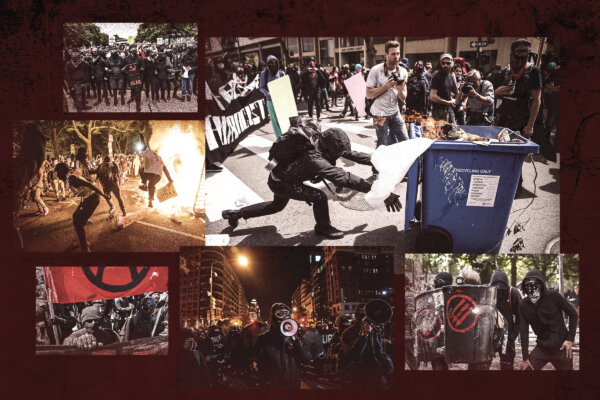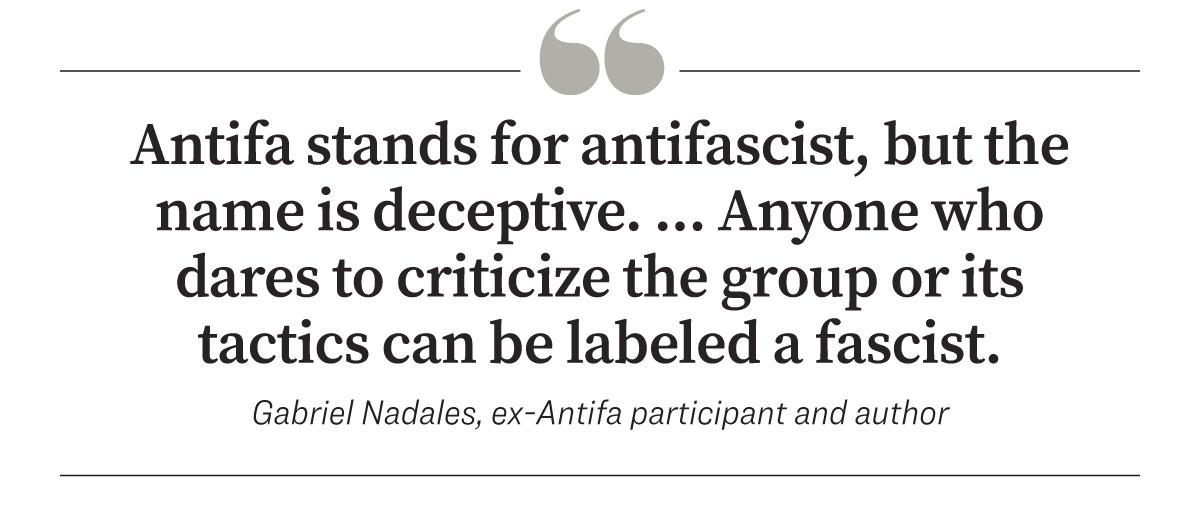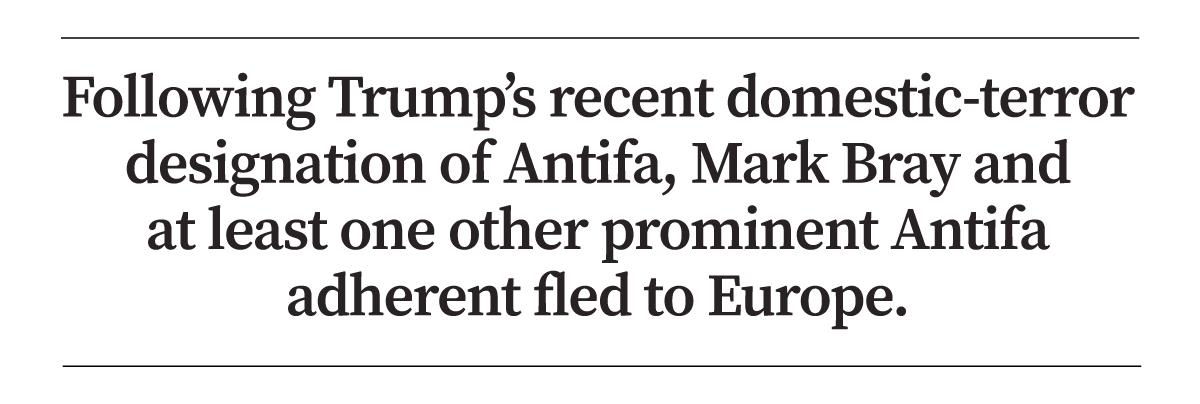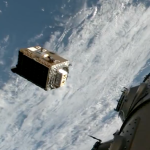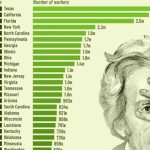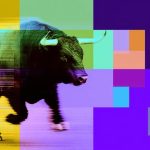Law enforcement authorities said last month that they believe the 22-year-old suspect acted alone when he shot Kirk, but are investigating whether anyone else had a role in plotting the killing.
President Donald Trump blamed “the radical left” for inspiring attacks against political figures such as Kirk.
Trump designated Antifa a “domestic terrorist organization” and ordered agencies to root out “any and all illegal operations” connected to Antifa and to prosecute perpetrators and their financiers.
Trump’s executive actions and Antifa’s clashes with Immigration and Customs Enforcement in major cities are drawing more public attention to a once-obscure movement that remains hard to define.
Trump said Antifa has recruited young people to riot, assault police, and obstruct federal agents, while also trying to squelch lawful political speech.
Antifa’s ultimate goal is less obvious and more menacing than that, Trump and others warn.

The president’s Sept. 22 order declared: “Antifa is a militarist, anarchist enterprise that explicitly calls for the overthrow of the United States Government, law enforcement authorities, and our system of law.”
How Antifa Started
Antifascism began as a response to Italian dictator Benito Mussolini in the 1920s. His National Fascist Party was named after a symbol of penal power in ancient Rome, the “fasces,” a bundle of rods with an axe.
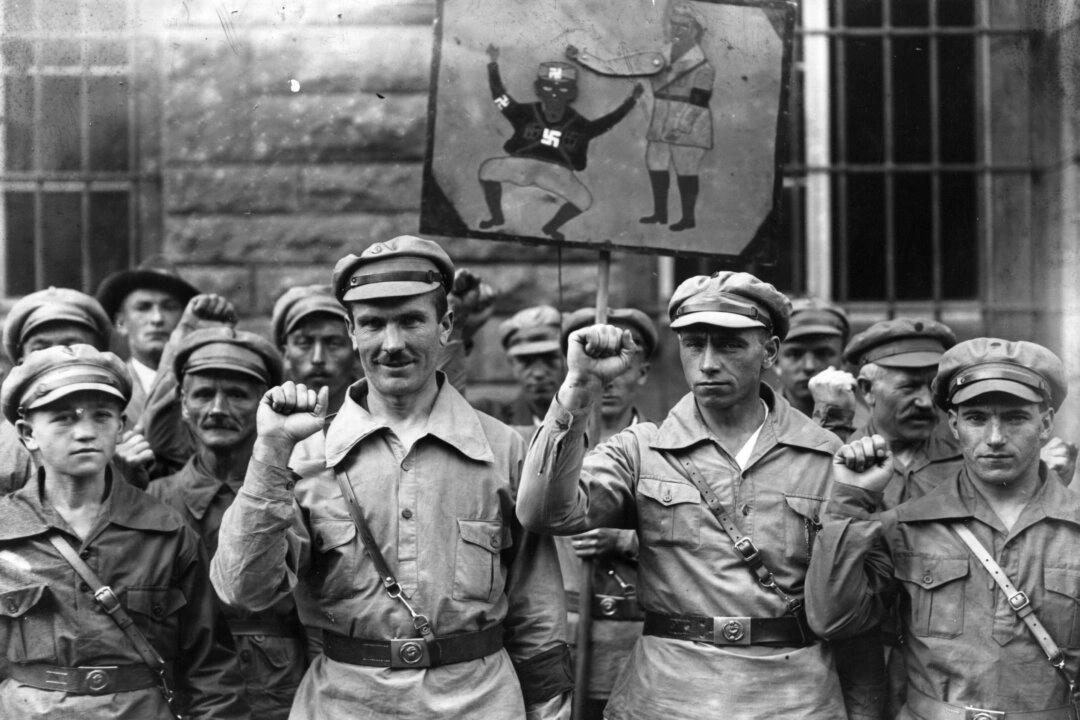
In 1932, Antifaschistische Aktion (Antifascist Action), a communist-led militant group that confronted Nazi stormtroopers in Germany, gave the modern Antifa movement its nickname and symbols that are still in use today, such as the raised-fist salute.
The Antifa movement persisted for decades in Europe before spreading to the United States via punk rock culture.
By the 1980s, a group called Anti-Racist Action had risen to prominence in the United States; later, it dissolved into smaller, decentralized groups.
Since the 2000s, Antifa groups have grown globally, largely thanks to the digital age; encrypted messaging networks have enabled Antifa to communicate privately and evade detection.
Although the most prominent Antifa groups in the United States are situated on the West Coast, the earliest groups emerged in the Midwest, including far-left skinheads known as “Baldies” in Minneapolis.
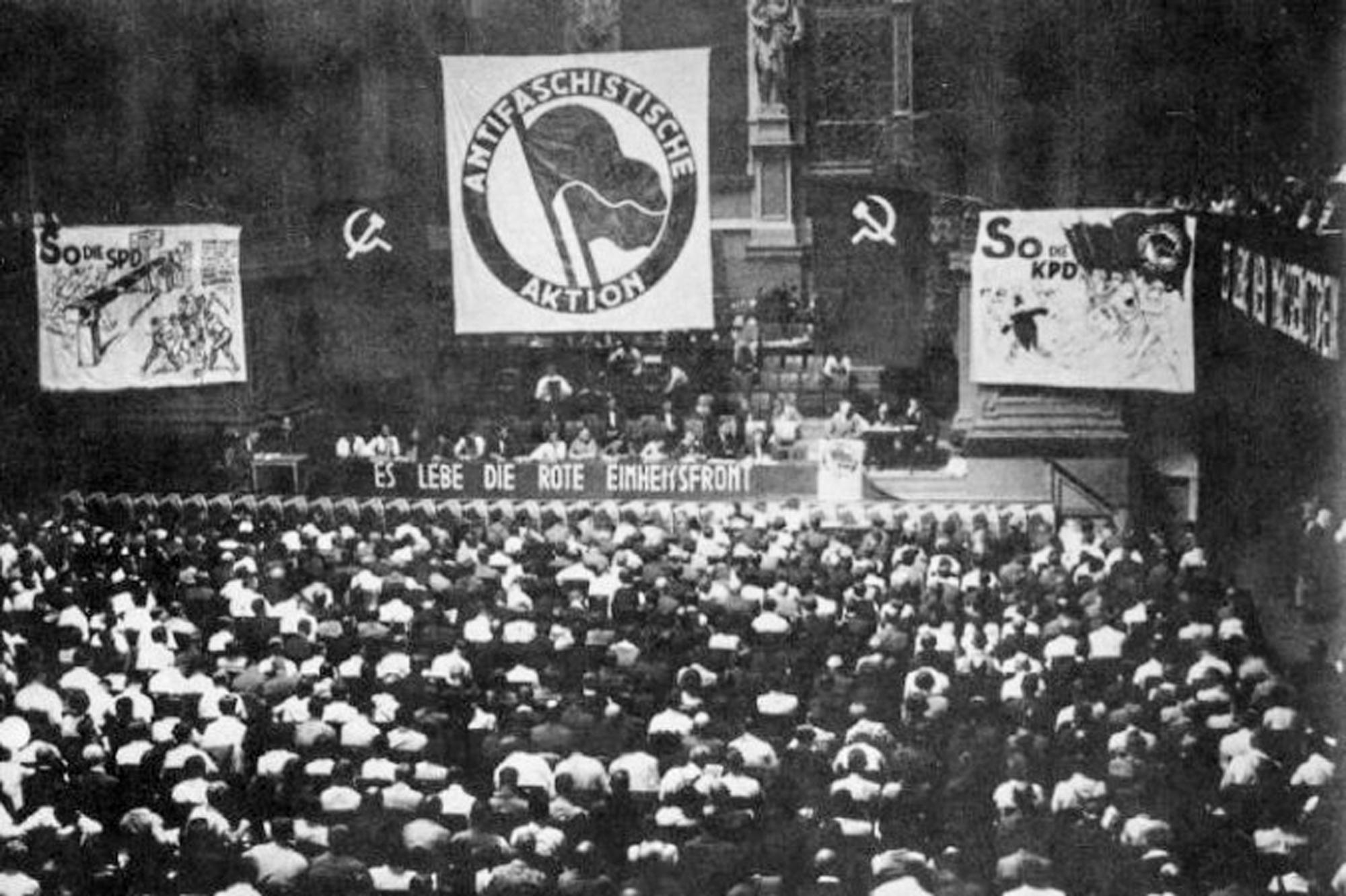
What Is Antifa?
Antifa, in many ways, defies description; journalist Andy Ngo and others told The Epoch Times that’s by design.
“It’s meant to appear as if there is no organization, but they are organized,” said Ngo, author of the 2021 book that became a New York Times best-seller, “Unmasked: Inside Antifa’s Radical Plan to Destroy Democracy.”
Ngo, the son of Vietnamese immigrants who escaped communism, delved into exposing Antifa for years in his hometown of Portland, Oregon. After repeated harassment, threats, and beatings—one severe enough to cause a life-threatening brain bleed—Ngo relocated outside of the United States.
In 2020, when then-FBI Director Christopher Wray and others called Antifa “an ideology” rather than an “organization,” that description was correct but “incomplete,” Ngo said, because what matters is how people organize around that ideology.
“Antifa is the decentralized movement of autonomous networks, groups, cells, and individuals who follow an ideology of violent anarchism and communism,” he said, adding that these people are united in their goal of destroying the United States and all of its institutions.
He said Antifa often commits “violence for the sake of violence,” and may randomly smash a local business as “an attack on capitalism.”
Antifa attracts socialists, communists, and anarchists, but some Antifa adherents may not align with any of those belief systems, according to the report.
Antifa members often wave black-and-red flags and gather en masse in all-black clothing, known as the “black bloc,” a typical German Antifa tactic to make individual members harder to identify. But even those visual cues don’t reliably identify who is Antifa and who isn’t, the report stated.

Terry Newsome, a Chicago-area parental-rights activist who became the target of Antifa death threats and doxxing after he became vocal about school COVID-19 restrictions in 2020, told The Epoch Times, that “there are tons of ‘Antifa wannabes,’” young people who think it’s cool to associate with Antifa. He’s also convinced that there are a lot of “paid, full-time agitators,” based on seeing the same people show up at numerous protests.
An Insider’s View
Gabriel Nadales, a self-described ex-Antifa participant, wrote in his 2020 book, “Antifa stands for antifascist, but the name is deceptive. … Anyone who dares to criticize the group or its tactics can be labeled a fascist.”
In “Behind the Black Mask: My Time as an Antifa Activist,” Nadales said that many news reports “oversimplify this radical movement.”
Anti-American sentiment is a primary driver of Antifa, he wrote, rather than opposition to fascism.
While he participated in Antifa actions from 2011 to 2012, Nadales said, news outlets mistakenly reported that anarchists orchestrated events that Antifa had actually led.
Rose City Antifa lists numerous stances that it may consider “fascist,” ranging from white supremacy to opposition of labor unions; the group deems a movement “fascist” if it embraces “a majority” of the listed characteristics.
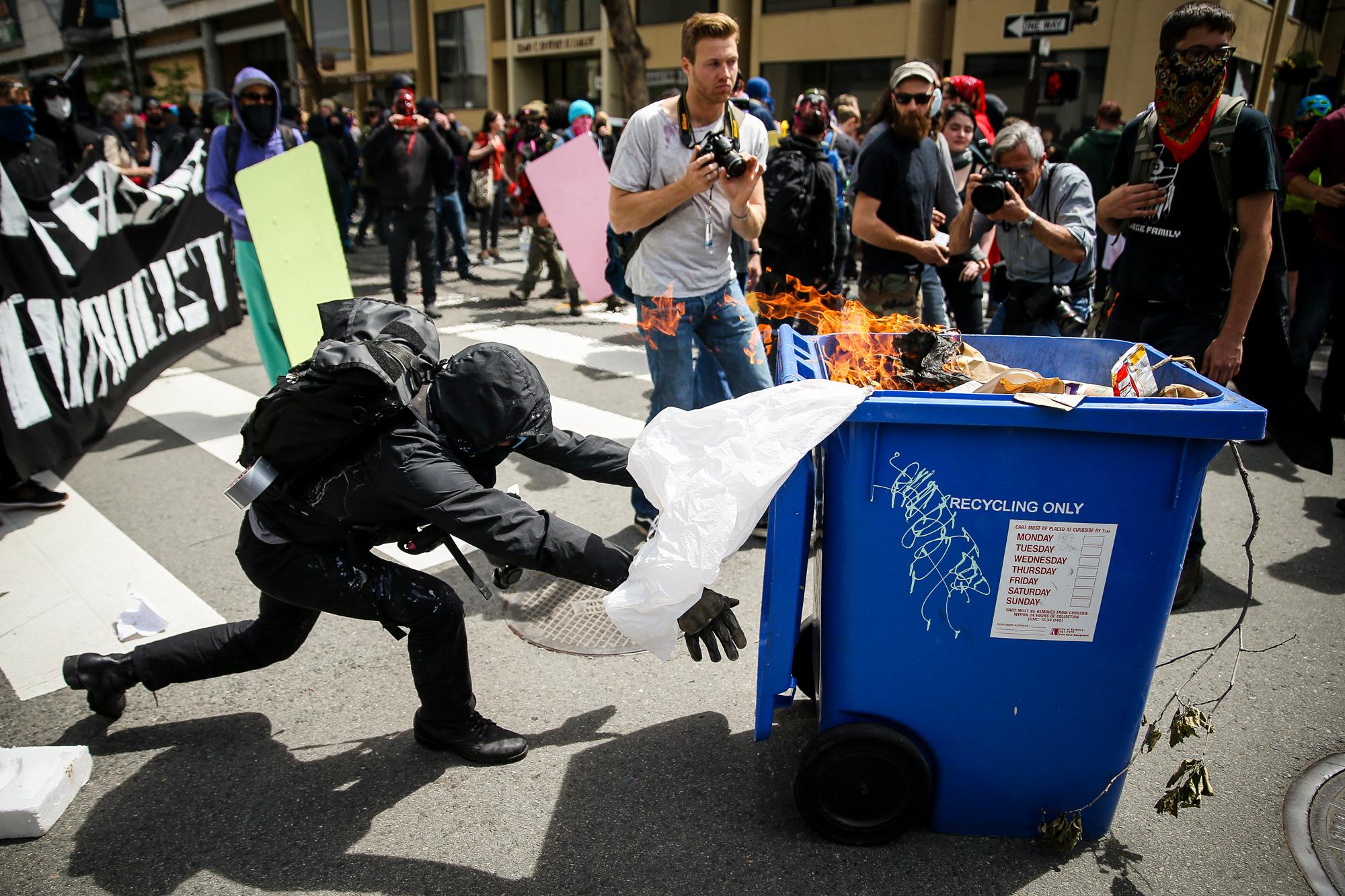
“Militant opposition to fascism creates the social consequences that make becoming a fascist in the first place a lot less appealing,” the group states.
Rose City Antifa says it doesn’t work with police or courts because “we cannot count on state actors to push forward the cause of justice, equity, and community safety.”
Nadales said other leftists also commit violence, but “Antifa exemplifies the worst of this dangerous ideology, which is becoming bolder and more prevalent in American society.”
Escalation During Trump Era
When Trump was inaugurated as the nation’s 45th president, hundreds of protesters smashed windows, blocked traffic, and scuffled with police in Washington. Some of the black-clad vandals were reportedly Antifa affiliates, according to “The Anti-Fascist Handbook.”
Bray wrote that he rushed to publish the 2017 book shortly after Trump first took office, feeling an urgency to combat “a resurgence of white-supremacist and fascistic violence” and the “tumultuous climate of the Trump era.”
Trump’s name is mentioned at least 85 times in Bray’s book. Toward the end, Bray wrote, “Our goal should be that in twenty years those who voted for Trump are too uncomfortable to share that fact in public.”
Bray calls the book “an unabashedly partisan call to arms.”
Based on interviews with 61 current and former anti-fascists from 17 countries, the book argues that “militant anti-fascism is a reasonable, historically informed response to the fascist threat” that persisted after 1945 and became more “menacing” prior to Trump’s first presidency.
Bray decried “an alarming lurch to the right” in Europe and the United States following the 2008 economic crisis.
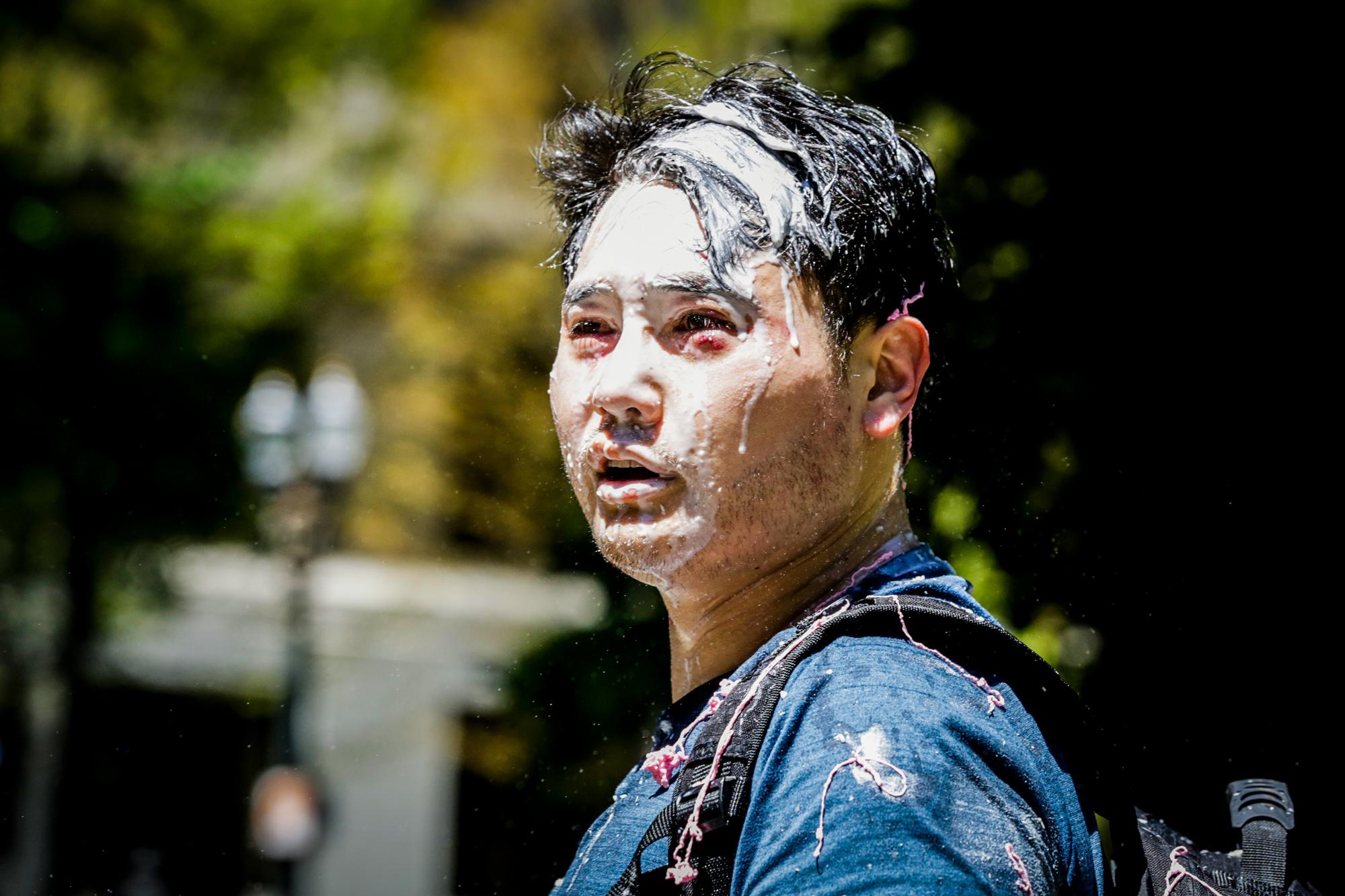
Antifa Rises to Prominence
Public awareness of Antifa soared during the summer of 2020. Members of the group sided with Black Lives Matter to protest against police and alleged “systemic racism” after the death of George Floyd, a black Minneapolis man, in police custody. Rioters destroyed businesses, set buildings and vehicles on fire, and fought with police across the nation.
Antifa exploited “justifiable indignation” that many people felt over Floyd’s death, and “used the anger as a springboard to push their radical left-wing agenda,” Nadales wrote.
The core motivation was not to demand police reform and prevent similar deaths, but rather that “the violence was targeted at destroying the private property of innocent Americans because Antifa hates capitalism and everything America stands for,” Nadales said in his book.
As Bray wrote in his book, even as times changed, Antifa’s commitment “to stamp out fascism by any means necessary” remains intact and connects the movement to its earliest origins.
An Antifa organization that benefited from proceeds of Bray’s book announced that it had shut down donation-processing operations because of Trump’s order.
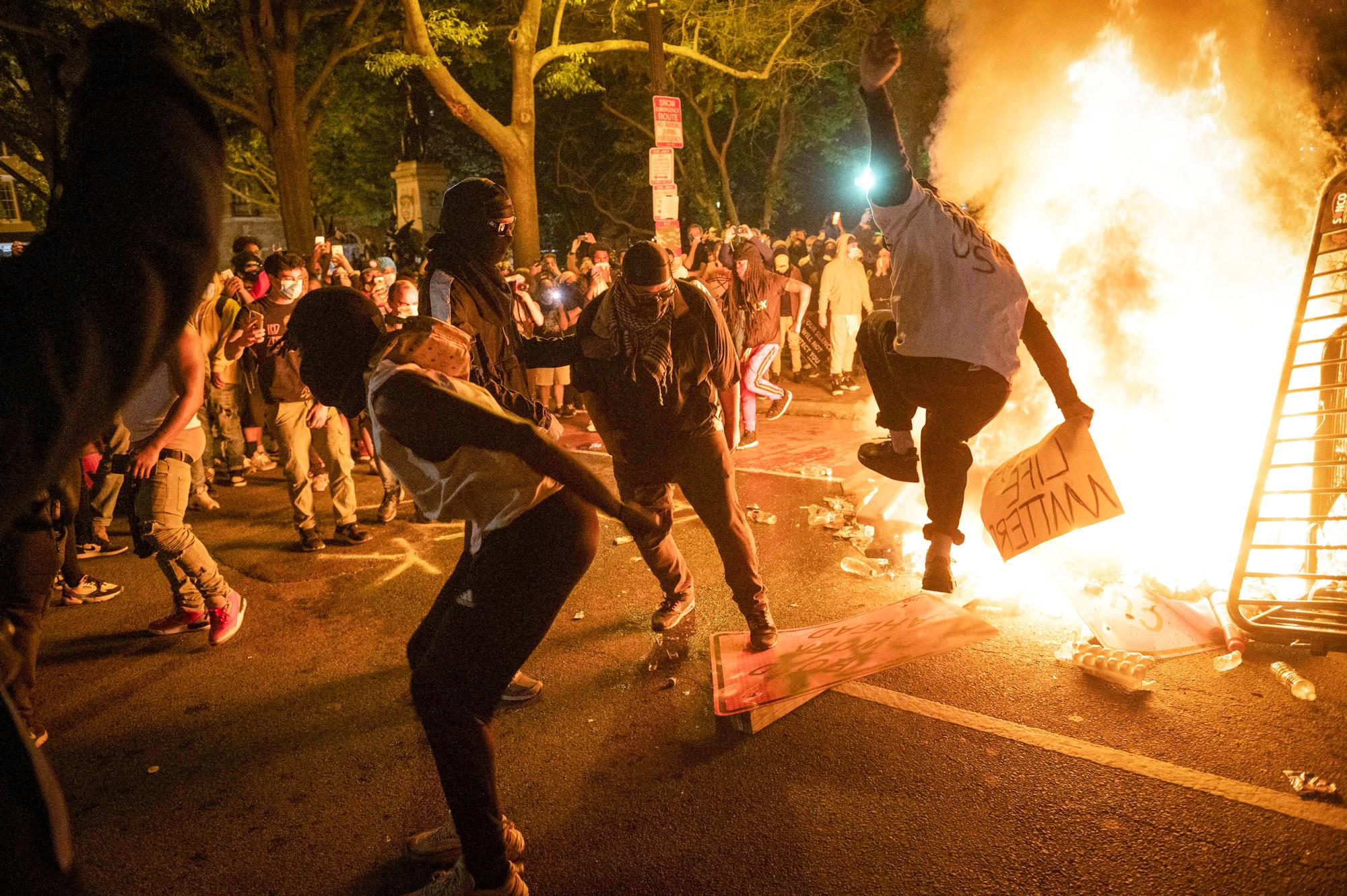
What’s Next?
Trump said that his administration, led by Treasury Secretary Scott Bessent, is tracking down who is funding Antifa-related activities such as commercially printed signage.
The president said those who financially support Antifa “are going to be just as guilty as the people that smack people over the head with a baseball bat.”
Ngo said that some grants from philanthropic groups eventually filter down to Antifa, which also benefits from crowdfunding and donations from around the world.
Some aspects of Antifa’s apparatus have moved underground, Ngo said, predicting that Antifa will “try to lay low, depend on the media to run cover for them, and hope that they get a Democrat in office again, who will undo the executive orders … [and] obviously not view Antifa as a domestic terrorist threat.”
Ngo, who participated in an Oct. 8 White House roundtable discussion about Antifa, said he hopes that his reporting provides insights that will help investigators.
He also suggests that, if people accept that Antifa opposes fascism, they should also wonder what the group supports.
“What Antifa is for is violence, destruction, murder, an abolishment of the liberal democratic order,” Ngo said. “It’s quite actually ironic in many ways that Antifa act as shock troops for people who claim to care about those institutions and values and concepts.”
Ngo suggested that rather than just listening to him, people should watch videos of Antifa violence, “and you can see how organized it is,” he said. “Watch that and then ask yourself, ‘What is that in furtherance of?’”

